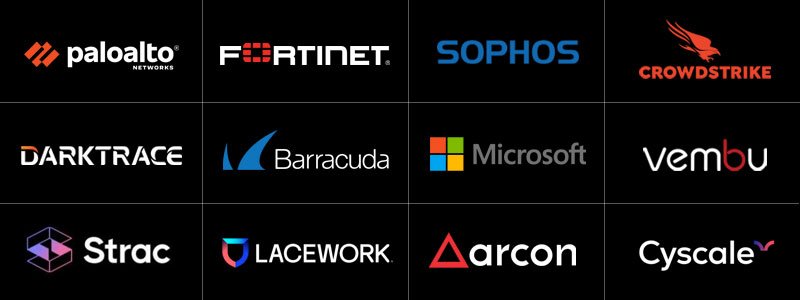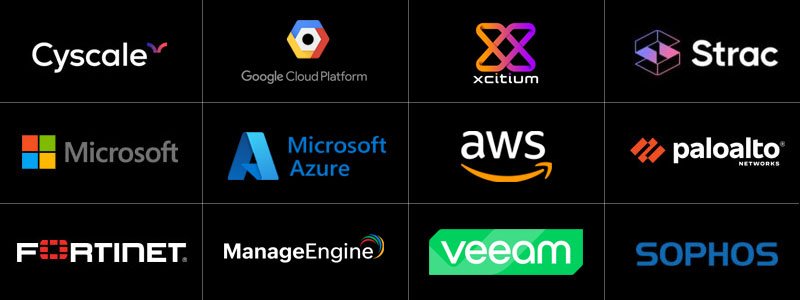IOT Device Security
IOT Device Security
WHAT IS
IOT Device Security
As digiALERT, we understand the importance of IoT device security and take a comprehensive approach to protect these devices from cyber threats. IoT devices, such as smart home devices, connected cars, and industrial control systems, are becoming increasingly prevalent in homes, businesses, and organizations. These devices are often connected to the internet and can be vulnerable to cyberattacks if not properly secured.
One of the first steps we take to secure IoT devices is to ensure that they are using the latest software and firmware updates. These updates often include security patches that address known vulnerabilities and help to keep the device secure.
We also recommend using strong and unique passwords for each IoT device. This helps to prevent unauthorized access to the device and the network it is connected to.
We also recommend disabling any unnecessary features or services on the device. This helps to reduce the attack surface and makes it more difficult for attackers to exploit vulnerabilities.
We also recommend using a separate network for IoT devices. This helps to isolate the devices from other networked devices and makes it more difficult for attackers to access the devices.
Speak to an expert
key features
IOT Device Security
Types of
IOT Device Security
2. Device Authentication: digiALERT can provide authentication and authorization mechanisms to verify that only approved IoT devices are able to access the network.
3. Data Encryption: digiALERT can encrypt all data that is transmitted between devices and servers to ensure its confidentiality.
4. Identity and Access Management: digiALERT can provide centralized identity and access management to control access to the network and devices.
5. Secure Firmware Updates: digiALERT can provide secure firmware updates to ensure that the devices are always running the most up-to-date version.
6. Malware Protection: digiALERT can provide proactive malware protection to detect and remove any malicious software before it can do any damage.
Statistics on
IOT Device Security
Speak to an expert
what are the
tests we do ?
At digiALERT, we include these OWASP Top 10 IoT risks as a part of our IoT testing services. Our goal is to identify vulnerabilities and security weaknesses in IoT devices, and provide recommendations for improving their overall security. By conducting these tests, we help organizations ensure the protection of their IoT systems and the data they handle.
OWASP Top 10 – IOT
1. Insecure Web Interfaces: This refers to vulnerabilities in the web-based management interfaces of IoT devices, making them susceptible to hacking.
2. Insufficient Authentication/Authorization: This refers to the lack of proper authentication and authorization mechanisms, making it easy for unauthorized access to the device.
3. Insecure Network Services: This refers to vulnerabilities in the network services offered by IoT devices, making them susceptible to hacking and exploitation.
4. Lack of Transport Encryption: This refers to the absence of encryption for the data transmitted between the device and the network, making it easy for hackers to intercept the data.
5. Privacy Concerns: This refers to the risks associated with the collection, storage, and sharing of personal information from IoT devices.
6. Insecure Cloud Interface: This refers to vulnerabilities in the cloud-based interfaces of IoT devices, making them susceptible to hacking.
7. Insufficient Security Configurability: This refers to the lack of configurability in the security settings of IoT devices, making it difficult to customize and secure them.
8. Side-Channel Data Leakage: This refers to the risks associated with the accidental or intentional leakage of sensitive data through IoT devices.
9. Broken Cryptography: This refers to the use of weak or broken cryptography algorithms in IoT devices, making them susceptible to hacking.
10. Poor Physical Security: This refers to the lack of physical security measures for IoT devices, making them susceptible to theft or tampering.
By addressing these risks, organizations can improve the overall security of their IoT devices and systems.
How do we do
IOT Device Security
One of the first steps we take is to ensure that all IoT devices are using the latest software and firmware updates. These updates often include security patches that address known vulnerabilities and help to keep the device secure.
We also recommend using strong and unique passwords for each IoT device. This helps to prevent unauthorized access to the device and the network it is connected to.
We also recommend disabling any unnecessary features or services on the device. This helps to reduce the attack surface and makes it more difficult for attackers to exploit vulnerabilities.
We also recommend using a separate network for IoT devices. This helps to isolate the devices from other networked devices and makes it more difficult for attackers to access the devices.
We also recommend using a VPN when accessing IoT devices remotely. This helps to encrypt the communication between the device and the remote access point and makes it more difficult for attackers to intercept the communication.
WHY IOT DEVICE SECURITY
WHO NEEDS IOT DEVICE SECURITY
IoT device security is vital in today's digital age, as it helps protect these devices from cyber threats and safeguard sensitive information. The increasing number of internet-connected devices increases the risk of cyberattacks and data breaches. IoT devices such as smart home systems, connected cars, and industrial control systems are widely used in homes, businesses, government agencies, healthcare providers, educational institutions, and by individuals for personal or professional purposes.
For businesses, the protection of intellectual property and customer data is crucial and requires proper IoT device security. Government agencies must secure classified information and critical infrastructure, while healthcare providers must secure patient data. Educational institutions must secure student and faculty information, and individuals must protect their personal information such as financial data and login credentials.
Given the large amount of sensitive data stored on IoT devices and the growing number of connected devices, it is imperative to ensure that these devices are secure and protected against known and emerging threats. Without proper security measures, these devices can be vulnerable to cyberattacks, leading to data breaches, unauthorized access, and potentially harmful consequences such as financial and reputational damage, and harm to individuals or the public. It is crucial to maintain the security of IoT devices to prevent these outcomes.
How often is IOT Device Security recommended
When it would be performed
IoT (Internet of Things) device security is the practice of protecting devices connected to the internet from cyber threats and vulnerabilities. These devices include smart appliances, home security systems, and medical devices, among others.
IoT device security is important because these devices often have access to sensitive data and can be used to launch attacks on other devices and networks. Additionally, many IoT devices lack proper security measures, making them easy targets for hackers.
To secure IoT devices, it is important to regularly update the device's software and firmware, use strong and unique passwords, and only connect to trusted networks. It is also a good idea to use a firewall and enable two-factor authentication for added security.
IoT device security should be a priority for both individuals and organizations. It is recommended to regularly assess and audit the security measures in place for IoT devices to ensure they are up to date and effective.
Speak to an expert
How are we
unique
- We offer customized and tailored IOT device security solutions to meet the specific needs of our clients.
- Our team of experts has extensive knowledge and experience in securing IOT devices and networks.
- We use the latest tools and techniques to ensure thorough and effective testing of IOT devices.
- We provide ongoing support and maintenance to ensure the continued security of our clients' IOT devices.
- Our flexible engagement models allow clients to choose the level of support they require.
- We have a track record of successful IOT device security projects for a variety of clients across different industries.
- We offer competitive pricing for our IOT device security services.
- We prioritize customer satisfaction and strive to build long-term relationships with our clients.
- We offer in-depth reporting and analysis to help clients understand their IOT device security posture.
- We adhere to industry best practices and standards in all our IOT device security work.














 ISO/IEC 27001:2022
ISO/IEC 27001:2022 ISO/IEC 20543:2019
ISO/IEC 20543:2019 ISO/IEC/IEEE 29119-5:2024
ISO/IEC/IEEE 29119-5:2024 CSA Certificate
CSA Certificate Incorporation
Incorporation Makeinindia
Makeinindia Authorized partner
Authorized partner MSME Chennai
MSME Chennai digiALERT Tan
digiALERT Tan GST Chennai
GST Chennai Pancard
Pancard Amended GST
Amended GST